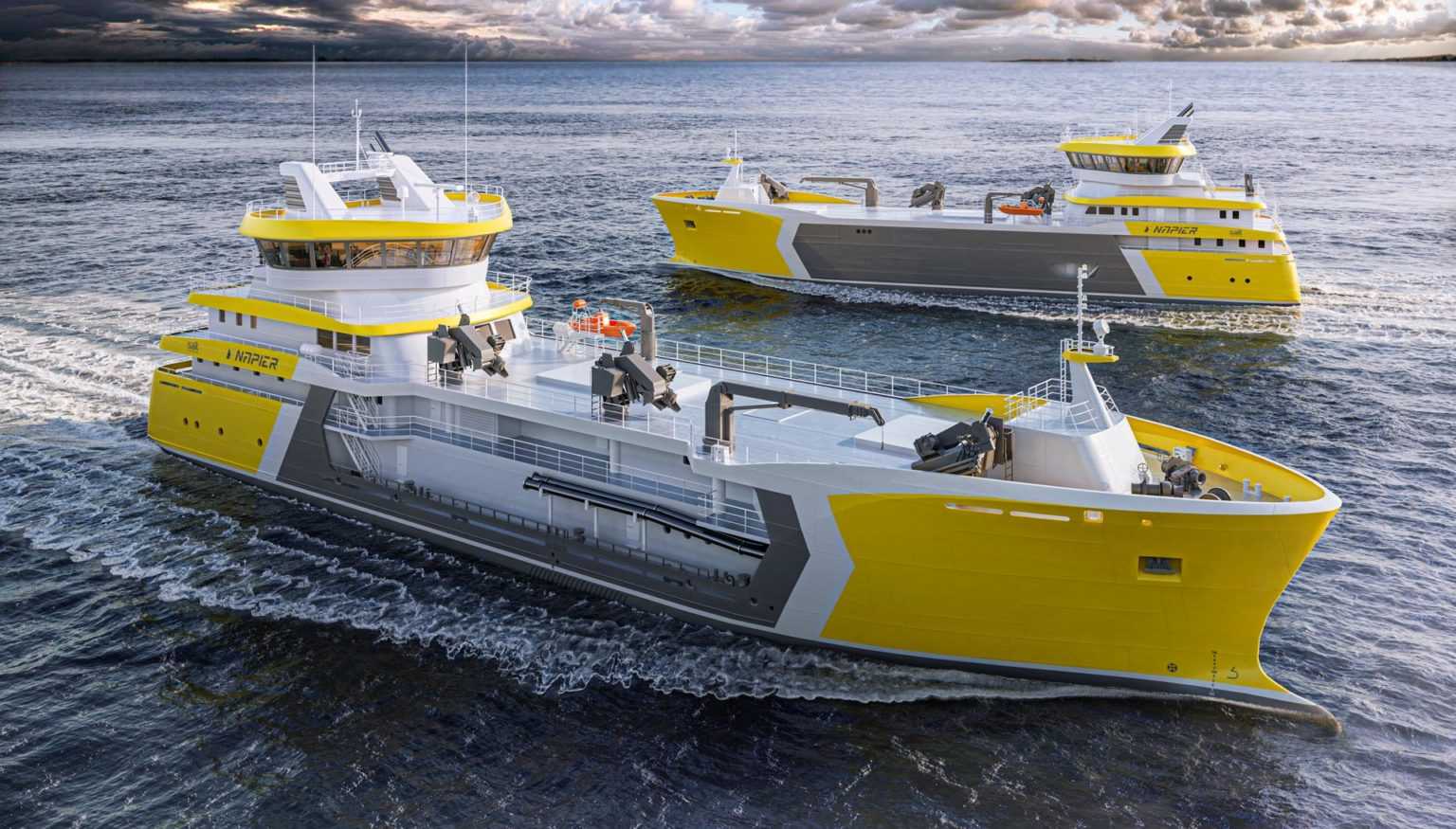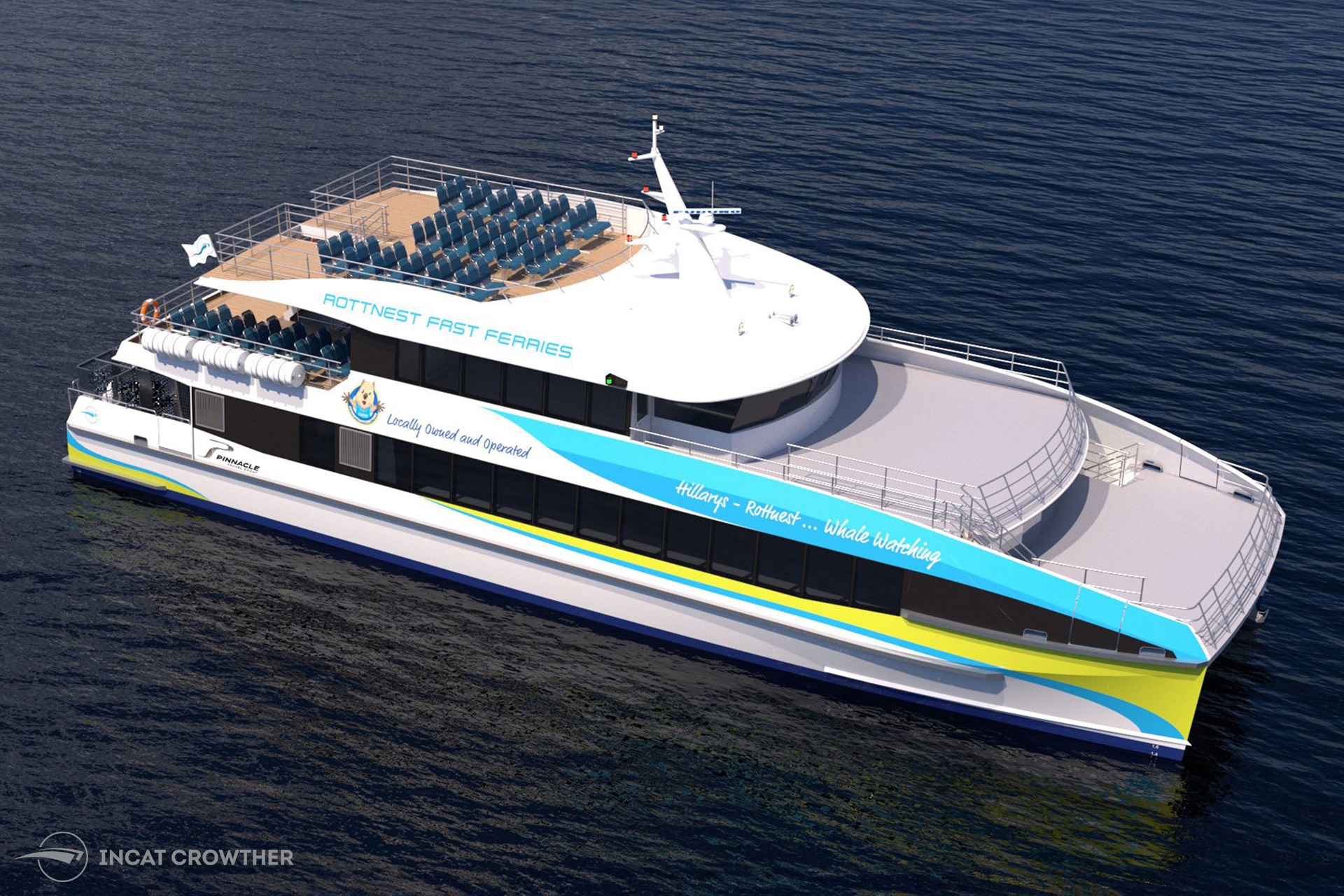Napier is building two new bluegill boats

Napier's two new bluegill boats will increase fish welfare, product quality and biosafety in the transport of salmon from fish farms throughout Central Norway. The Bømlo shipping company is now starting the hunt for 50 new Norwegian seafarers.
For Mowi's new factory on Jøsnøya, Napier has been awarded a contract for the delivery of two new bløgge boats. They will bleach and transport ready-to-slaughter fish from cages in Central Norway to the factory.
We have worked closely and well with Mowi since 2008, and look at the new agreement as a recognition of the concept and how Napier performs bleeding at the edge of the cage, says Kjetil Tufteland, general manager of Napier.
Sees great benefits
Tufteland is proud of the new contract, and believes the benefits of using a blue boat are many.
- The use of a blue boat is good for the welfare of the fish, and the technology also represents a far better alternative for infection-proof transport, he says. Tufteland also refers to the Norwegian Food Safety Authority's clarification of principles in 2021, where the Norwegian Food Safety Authority also concluded that the risk of infection spreading from blue boats is lower than from well boats.
When using a bluegill boat, the fish is killed immediately when it comes on board the vessel, which reduces handling and at the same time eliminates transport stress and mortality to the slaughterhouse. The vessel is completely closed and there is no exchange of water or contact with the sea. There are also separate loading and unloading systems, which eliminates the contact between the slaughter fish and the fish that are still in the cages at the sea facilities.
- Great progress
The contract with Mowi was the trigger for Napier now ordering two new bluff vessels. With a length of 70 meters and a width of 15 meters, the ships will be the largest in the company's fleet - which today counts four vessels.
- Through innovation and development, Napier will be in constant motion going forward for our customers, and the next newbuildings represent a major step forward. Both for our business concept, but also for the entire organization - since they will need 50 new Norwegian seafarers as crew on the ships, says Tufteland. Napier currently has approx. 70 employees.
The new sister ships are designed by Salt Ship Design in Stord, and will be built at Sefine Shipyard in Turkey. The goal is to put both into operation by 2024. The ships will have the capacity to load and bleach 200 tonnes of salmon per hour. In the tanks with cooled seawater, there is room for around 750 tonnes of fish during the closed transport between the cage and the slaughterhouse.
Smaller climate footprint
- The vessel size and dimensions of the fish handling facility give us significantly greater loading and bleeding capacity than we have in today's fleet. Like our existing vessels, the newbuildings and processes on board are also designed for the highest possible level of fish welfare. They have an ethical responsibility to give the fish the best possible conditions on its last journey. At the same time, good fish welfare with little stress also results in better quality of fish meat, which is of course a big plus for our customers, explains Kåre A. Cederström, quality manager and aquaculture biologist at Napier.
He further reminds that bløgge boats have 75 percent fish in mind on each transport. This makes the vessels the market leader for climate and environmental emissions per kilo of farmed fish transported. Since they do not have to carry large amounts of water that the fish will swim in during the voyage, the blue boats can be built smaller than traditional well boats. This results in far lower fuel consumption and a reduced climate and environmental footprint.
In the actual transport phase, the energy-efficient newbuildings will transport 5.3 tonnes of salmon per liter of diesel consumed, a clear improvement from our existing vessels. The ships will also use shore power during the unloading of fish at the slaughterhouse, which is expected to reduce fuel consumption by approximately 200,000 liters of diesel per year per ship, Cederström points out.
Technology development increases biosafety
For handling the fish on board, both vessels shall be equipped with the latest technology in a fishing package provided by skilled main partners in MMC and Baader. Based on joint operating experiences with Mowi since 2008, Napier has worked with system suppliers and research environments such as Sintef and Nofima on further development of both the bleach, washing and cleaning systems on board.

